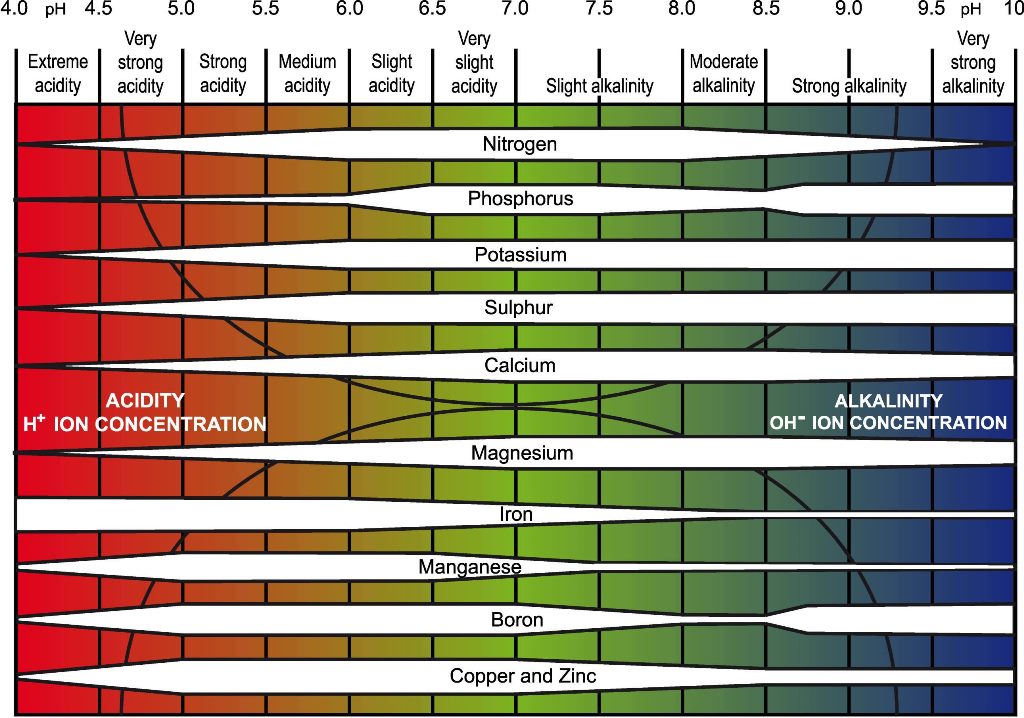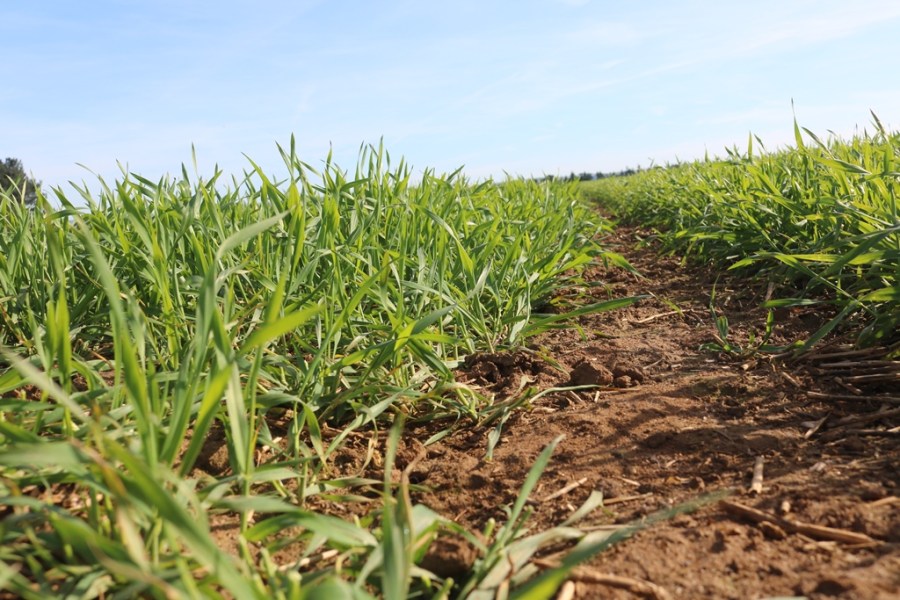A healthy crop needs unbridled access to both macro and micronutrients. In the first of a series of articles that explores how to ensure this, CPM starts with the foundation: soil.
The problem of ‘hidden hunger’ is vastly under-estimated.
By Andrew Blake
Feeding crops for maximum yield can be an inexact science without a thorough understanding of the factors underpinning nutrient availability. So says FMC’s technical manager for crop nutrition, Charlie Bannister.
The key nutrition drivers are a soil’s underlying geology and its health, he maintains.
“Soil health has a far higher profile than it had even only five years ago. The value of a holistic approach to growing crops is becoming more and more appreciated.
“But soil science is an amazingly complex subject, and we still have plenty to learn.”
The AHDB’s Information Sheet 25 notes that many soils contain enough micro-nutrients to support good yields of wheat and oilseed rape; but it adds that their availability is affected by several factors, not least their acidity or alkalinity – ie pH (see chart below).
Nutrient availability across the soil pH range

Source: Potash Development Association, from Troug (1946)
“Soil health affects crop nutrition in so many ways,” says Charlie. “And in turn crop nutrition affects plant health and therefore crop yield.”
Poorly structured soils inhibit and restrict rooting, and they slow nutrient movement through the profile. Phosphate, for example, is severely affected.
“Soil pH has a significant impact on nutrient availability, and recent information (cf Professional Agricultural Analysts Group Report, 2013) suggests many soils are outside the optimum range. Again phosphorus is a classic example – there’s a fairly narrow pH band for maximum availability.”
Nutrient shortages may have unexpected consequences.
Insufficient manganese reduces leaf wax which makes plants more prone to disease, he explains. “University of Copenhagen work has shown reductions in wax of up to 50% in crops which get too little Mn – even in the absence of deficiency symptoms.”
Many growers, especially those farming their land for a long time, have a good idea of how fertile it is, acknowledges Charlie. But by understanding the impact of its underlying geology and adopting comprehensive soil analyses they should be better placed to ensure their crops are never partially starved.
A useful starting point is the Advanced Soil Geochemical Atlas of England and Wales maps (www.ukso.org/nsi/home.html), he suggests.
“I know there are many variations within farms; so I use the information in them as a general background – a foundation, if you like – onto which individual farms then build their own soil types.
“Take East Anglia – in places its top soils are low in many nutrients, for example magnesium. So they generally need feeding, not just with Mg, but also with other elements.
“Look at the Permian Limestone on the western border of The Vale of York and which sweeps north into Durham and Cleveland and into Tyne and Wear.
“ADAS work in the 1990s showed high soil Mg levels, which are understandable, but also an imbalance in potassium to Mg ratio. We know Mg can antagonise K uptake, so growers in that area should consider applying foliar K, for example Kurus.
“Farmers may well be fully aware of their general soil types, but how many understand such interactions? I go to the maps and immediately think ‘high Mg so low potential K availability’.
“Look at the Jurassic sandstone of the Howardian Hills. It’s given rise to hungry soils with low cation exchange capacity, some of which I call ‘running sand’.
“They need feeding but can’t hold onto nutrients well; so foliar nutrient application is a suitable option, and I’ve had good results with a comprehensive programme.
“What these soils really need is organic matter. It improves soil structure nutrient availability, but it’s also a source of nutrients in its own right. The problem is finding sources of it.”
Key symptoms of deficiencies
[table id=1 /]
Field soil analyses are vital and relatively inexpensive given the potential rewards from avoiding under-feeding crops, says Charlie.
“They’re the basis of everything, and I advocate comprehensive analyses – not just those for P/K/Mg and pH which paint only a part picture.
“Interpreting the results is the area where people often fall down. I don’t blame farmers, but there’s no point doing an analysis unless it’s interpreted correctly.
“It’s all a matter of understanding element availability and then considering a foliar application to pre-empt any potential problems.”
Calcium is the over-riding element, he stresses. “It competes with others for uptake, for example K and Mg, and it affects pH which then affects the availability of all other elements; and some can lock onto calcium carbonate in the soil.”
Once potential shortages are pin-pointed, remedies require careful thought, he warns.
“It’s all a matter of interpretation. For example, you’ve done your soil analysis so you know what might happen. You then do a leaf test and it shows that although you have a high soil Mg level it’s showing a low level in the tissue.”
Clearly that would highlight the need for a foliar treatment, he acknowledges. “But if I had to do just one analysis it would be on the soil to identify the potential risks – then interpret them in the light of overlying factors like the weather, soil structure and the field’s organic matter level.”
Adopting the soil health knowledge approach and applying appropriate remedies has lifted yields by up to 15% in some trials, he notes.
Crops’ semi-starvation, often referred to as ‘hidden hunger’ is always a possibility, copper and zinc being the micro-elements most likely to merit attention beyond Mn, he says.
“I think the problem of ‘hidden hunger’ is vastly under-estimated.
“But we’re involved in crop nutrition as a whole – not just the restrictive area of micro-nutrients. And when macro-nutrients P and K suffer downtimes in availability, information suggests our foliar products can give them a helping hand.
“It’s then that formulation becomes important, and it’s an area we’ve focused on in our development work. We’ve looked at the efficacies of different co-formulants, and have worked with the University of Copenhagen exploring the ability of different formulations to rectify hidden Mn deficiencies.”
Soil type is basis for nutrition advice
 For too long the soil has been treated as a completely renewable resource and a gift that will just keep giving, warns Chris Coates of Sustainable Ag Solutions.
For too long the soil has been treated as a completely renewable resource and a gift that will just keep giving, warns Chris Coates of Sustainable Ag Solutions.
“It obviously isn’t either,” he says.
As an independent agronomist Chris advises on about 40 farms of various sizes in east and north Yorks which grow a wide range of crops including potatoes.
“The soil is a farm’s bank account and its most valuable asset, and yet it’s treated with little respect in some cases.”
The farms have widely differing soil types which he uses as the basis of his crop nutrition advice. “They range from sands through to clays, and there’s also a good area of the Yorks Wolds.
“The Wolds are a good example. You might not expect manganese deficiency, but tissue testing often highlights it because of the high pH, even though the crop may not show classic symptoms.”
Organic inputs increasingly figure in his crop nutrition decisions.
“We’re going into much greater detail these days with GPS soil analysis and more testing for organic matter. We know how important it is for water retention, nutrient supply and soil stability.
“I understand the value of selling straw from a farm, but in the longer term is it really something that should be consistently stripped away if there’s no organic matter being reapplied?
“For farms that make a point of using organic matter, and I have one now using compost, the crop benefits are almost immediate, and the long term payback must be huge.
Soil analysis guides east Yorks farm policy
 Understanding soil nutrient supply is a key aspect of Guy Shelby’s operations at Skirlaugh, East Yorks. He grows a wide range of crops on an area recently expanded to 550ha.
Understanding soil nutrient supply is a key aspect of Guy Shelby’s operations at Skirlaugh, East Yorks. He grows a wide range of crops on an area recently expanded to 550ha.
“We use both SoilQuest and Soyl to assess soil health and get an indication of the P, K, Mg and pH on the farms we run. Getting the basics right comes first.
“The neighbouring farm we took on this year has low pH in some parts, so this is the first thing we’ll rectify, and then using variable P and K applications we’ll look to even up the indices across fields.”
His soils range from sandy clay loams through silty clay loams to clay loams, and include some dark high organic matter (12%) ‘carr’ land.
“Each has its own problems and challenges. Soil scanning and testing helps me and my agronomist deliver the nutrition our crops need. Understanding what nutrients are available in the soil is important, and soil testing gives us that understanding.”
Organic matter is vital to soil health and maintaining P and K levels, he stresses.
“We use the pig manure and slurry from our unit as well as cattle FYM and sewage cake, and we factor in these applications when creating the variable nutrient applications.
“We try to move the manure and slurry to parts of the farm that have lower indices shown on the soil sampling maps.
“We chop all the straw not taken for bedding as I believe it’s better returned to the land rather than sold off the farm.
Addressing ‘hidden hunger’ starts with broad-spectrum soil analysis across a few fields in spring “to get an idea of where we’re at”.
“Then throughout the season we send away leaf samples to see if there are any deficiencies, and if so apply foliar micro-nutrients along with the fungicides.
Boron and molybdenum are particularly important on oilseed rape and zinc as is copper on wheat and barley, he notes.
“But to some extent all micro-nutrients are important, and by taking tissue samples throughout the season we can make sure we don’t run into deficiency problems.”
Keeping an eye on P
In future, to meet the EU Water Framework Directive target, growers may need to farm with soils at P index 1 rather than keeping them at index 2, notes Charlie.
“If we’re going down the P index 1 route, which I think is very dangerous from the crop yield perspective, foliar feeds such as our Hi-Phos could become particularly useful.”
Nutrient nurture
An appreciation of the importance of crop nutrition and the need to understand its multifaceted nature are essential to optimise crop performance. In this sponsored series, CPM has teamed up with FMC to explore the individual elements needed for crop growth and the factors which apply individually to each element.
From functions within the plant to behaviour in the soil, antagonism, synergies, environmental impacts and limiting factors, these articles seek to unlock the answers and facilitate sustainable increases in crop yield and quality.
FMC supplies an extensive range of foliar nutrition products, encompassing those containing single elements to more complex multi-element products formulated to meets differing crop demands. FMC is also the market leader in the manufacture and supply of foliar nutrition products using humic technology, nitrate salts and advanced surfactant/suspension systems delivering rapid uptake and utilisation of elements by the plant.





